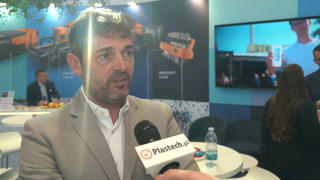
At the beginning of 2025, news of bankrupt recycling companies, mainly in Western Europe, were reported in a series of non-exhaustive lists of names: Blue Cycle - Netherlands, Stiphout Plastics - Netherlands, Bage Plastics - Austria, Texaid, Veolia - Germany. And the list goes on. Meanwhile, in theory, plastic recycling should be in its heyday, with a mandatory recyclate - recycled plastic - content in packaging due to come into force in the European Union in 2030. Despite the encouraging statistics, it was a serious warning sign that the European Plastics Pact, after an ambitious start in 2020 and despite long-term plans, unexpectedly ended its activities in 2023 after two and a half years of activity.
All this suggests that recycling does not work as it is commonly thought. While it is generally true that all plastic products are recyclable. But what the resulting regranulate will be used for is a big question. In general, well-intentioned amateurs, including responsible governments, are not aware of the fact that plastics are mixed in recycling and even if they can be separated by type of plastic, they are far from being a homogeneous set of materials. Moreover, even if by some chance we are talking about a homogeneous set of materials, they do not know what happens during recycling.
Virgin polymer is also exposed to severe thermal shock and shear during primary conversion. It is then exposed to impacts, solar radiation, chemical, physical pollution and last but not least physical stress. And these effects are constantly stressing the material, degrading the molecular chains. It undergoes further shear and thermal shock during recycling. These result in a fragmentation of the polymer chain and a broadening of the molecular weight distribution for polyolefins that account for half of the total use. In most cases, it is clear from the first recycling operation that the quality of the resulting regranulate is nowhere near that of the original material. Of course, there are also materials, such as PET, where multi-cycle recycling works quite well.
Coming back to polyolefins, commonly known as polyethylenes and polypropylene, which are most commonly encountered in the form of bags and food packaging, accounting for nearly half of all plastic production and consumption. One of the roots of the problem is a wide, diversified supply. For polypropylenes we distinguish 77 different applications, while for polyethylenes we distinguish 183 different applications and in addition, for polyethylenes, different density categories multiply the number of applications. Consequently, collection and sorting is also complex, creating a wide variety of waste and regranulates.
After recycling, finding a suitable area of use is not easy either. It is no coincidence that regranulates are mostly used for the simplest agricultural, construction and simple packaging products. For these film and injection moulding grades, which are not very sensitive to quality, regranulate can be produced and used in industrial quantities. However, for most applications waste and regranulate are only available in manufacturing quantities. There is no waste available in sufficient quantity or quality to serve the variety described above. It is enough to think that the 8 m wide BOPP roll will in many cases become a 4 cm wide candy wrapper. How to collect and recycle these materials, especially after they have been exported and used elsewhere.

The biggest problem with mechanical recycling is that during recycling we can only return to the original product in exceptional cases. That is, we can no longer produce the same quality product from the starting plastic product - for example, film waste. The other big problem is that the scale of recycling is much smaller than plastics production, but if you look at individual applications the difference can be two or three orders of magnitude smaller. And the reason for this is not capacity.
We can boldly state that there is sufficient recycling capacity, but there is not enough high-quality, processable waste, and for the waste and regranulate that there is, there is no market that ensures adequate profitability.
For now, the recycling of polyethylene and polypropylene seems to be a failure compared to the plans. The biggest problem is that in the meantime, very favorable and mandatory rules will come into effect from 2030, primarily in the case of packaging materials, with EU regulations stipulating a mandatory recycled content of 10-30 percent. With this legislation in place, hundreds of recycling companies have been set up and recycling machinery manufacturing has boomed. However, the available technology - mechanical recycling - does not seem to be able to meet the targets set by EU-level legislation.



